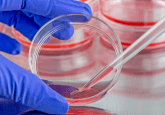3D-printed fluid system supports the growth and development of artificial organs

A collaborative team of scientists has developed a 3D-printed fluid system to support the growth and development of artificial organs.
Described in Science Advances, researchers from the University of Washington Medicine Institute of Stem Cell and Regenerative Medicine (WA, USA) and Rice University (TX, USA) designed the technique, termed Heat Exchangers for Actuation of Transcription (HEAT), to serve as a 3D-printed fluid system, similar to that of a conventional radiator, reportedly manipulating the genetics of cells deep within the artificial tissues.
“What I love about HEAT is that it’s an independent way to control gene expression compared to other tools generally available for mammalian gene activation, such as those that rely on chemicals or light,” explained study author, Jordan Miller (Rice University).
“The elegance of HEAT is that we used mass transfer with flow to deliver the heat transfer. This works so well because both phenomena follow similar physical transfer laws,” Miller concluded.
Read the full story on our partner website, RegMedNet
You may also be interested in:
- Hydrogel-based sensors could be 3D printed directly onto human organs
- Transparent human organ models: mapping the future of bioprinted organs
- Novel, ‘SWIFT’ technique for 3D printing organs
Sources: Corbett DC, Fabyan WB, Grigoryan B et al. Thermofluidic heat exchangers for actuation of transcription in artificial tissues. Sci. Adv. 6(40), eabb9062 (2020); https://newsroom.uw.edu/news/heat-building-3d-artificial-organ-tissues





